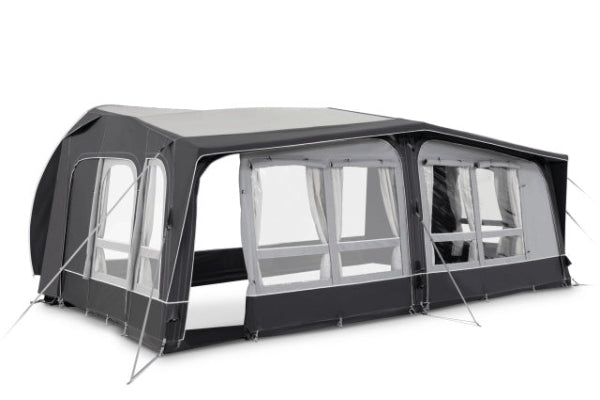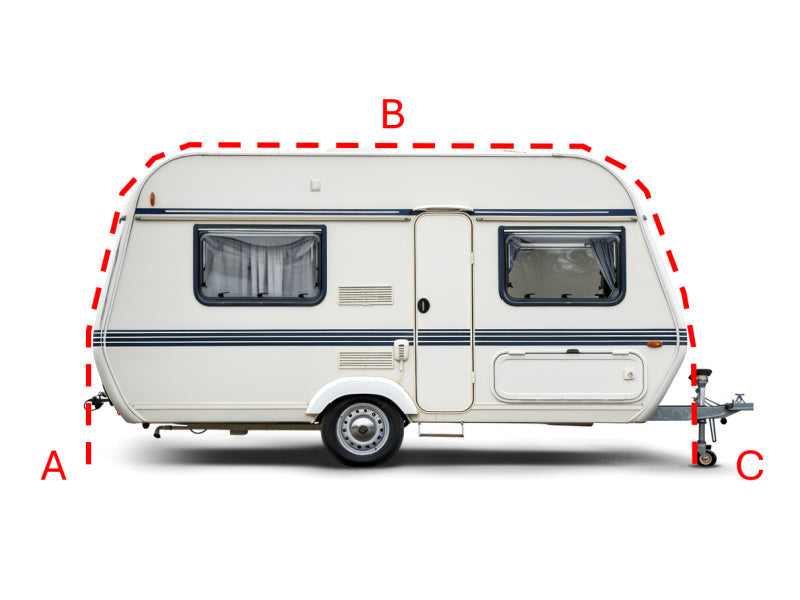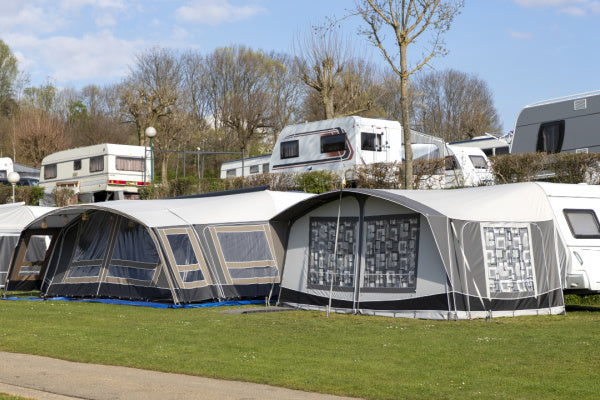How to Open a Caravan Awning: Simple Tips
Battling with a stubborn caravan awning in the rain isn't anyone's idea of holiday fun. Yet it's a scene that plays out on campsites across Britain every summer.
Opening a caravan awning might seem daunting at first, but with the right approach, it becomes second nature. The basic process is straightforward: secure the caravan, unlock the canvas, unfold with care, and attach the framework securely.

Preparing Your Caravan Awning for Opening
Safety First: Checking for Obstacles and Weather Conditions
Identifying Potential Hazards
Mother Nature has a habit of placing obstacles exactly where they're not wanted. Before touching the awning, take a good look around the caravan. Watch out for branches that could snag the canvas or power lines that might interfere with the setup. Leave enough space around the caravan - at least two metres on each side makes life much easier.
Checking for Wind and Rain
British weather loves to throw surprises. Check the forecast before starting the setup process. Strong winds above 20mph or heavy rainfall can turn awning setup into an extreme sport. There's no shame in waiting for better conditions - it's better than wrestling with a windswept canvas.
Gathering Your Equipment
Awning Poles and Straps
Missing equipment causes more headaches than anything else when setting up an awning. Lay out all poles and straps on a groundsheet before starting. Check each component against the manufacturer's list. Modern awning frameworks use specific rafters and legs - mixing these up leads to wobbly results.
Pegs and Guy Lines
Sandy soil needs different pegs than rocky ground. Pack a variety of pegs to handle any terrain. Rock pegs work brilliantly on hard ground, while sand pegs prevent midnight disasters on looser surfaces. Always pack spare guy lines - they have an uncanny knack for disappearing when needed most.
Optional Extras
Think about the camping experience ahead. An awning carpet transforms the space into an outdoor living room. Side panels offer protection from surprise showers and nosy neighbours. Having these ready before starting makes the whole setup smoother.

Choosing Your Pitch
Finding a Level Surface
Uneven ground creates endless problems with awning stability. Use a spirit level to check the caravan's position. Even a slight slope can lead to water pooling on the awning - nobody wants an impromptu shower while grabbing the morning tea.
Considering Sun and Wind Direction
Smart positioning makes life more pleasant. Consider where the sun rises and sets. Position the awning to catch morning sun but provide afternoon shade. Check local wind patterns - setting up with the wind behind the awning reduces noise and strain on the structure.
Step-by-Step Guide to Opening Your Caravan Awning
Extending the Awning
Unrolling the Awning
Take it slow here - rushing leads to tangles and frustration. Release the locking mechanism with care. Whether using a ratchet system or manual crank, maintain steady pressure. Watch for any catching or snagging of the material.
Adjusting the Awning Arms
Balance matters more than speed. Extend each arm gradually, checking they move at the same pace. Uneven extension puts stress on the mechanism and leads to alignment problems later.
Raising the Awning
Using Awning Poles for Support
Think of awning poles like tent poles - they need proper positioning to work effectively. Start from the centre and work outwards. Each pole should click firmly into place. Wobbly poles mean something's not quite right - double-check the connections.
Adjusting the Height and Angle
Getting the angle right prevents water pooling. Aim for a slight slope away from the caravan. Use the adjustment mechanisms on each pole to fine-tune the height. A well-adjusted awning shouldn't collect water even in heavy rain.
Securing the Awning
Pegging Down the Awning
Start with the corners and work inwards. Drive pegs at a 45-degree angle away from the awning for maximum hold. Keep guy lines taut but not overtight - they need some give for windy conditions.
Securing the Sides and Front
Attach side panels when the main structure feels solid. Work methodically around the awning, securing each panel fully before moving to the next. Check all zips and Velcro attachments work smoothly.

Types of Caravan Awnings and Their Opening Mechanisms
Roll-Out Awnings
Ratchet Systems
Modern ratchet systems make life easier. They provide mechanical advantage for smooth opening. Keep the mechanism clean and lubricated for best results. Listen for unusual sounds - they often signal maintenance needs.
Crank Systems
Manual cranks offer reliable service with minimal maintenance. They require more effort but provide excellent control during extension. Keep a steady rhythm when cranking - jerky movements stress the mechanism.
Air Awnings
Inflation and Deflation Procedures
Air awnings revolutionise setup time. Use the recommended pressure - over-inflation risks damage while under-inflation leads to sagging. Keep the pump and pressure gauge handy for adjustments.
Porch Awnings
Simple Frame Assembly
Porch awnings offer quick shelter without full awning complexity. Label frame pieces during first assembly - it saves time later. Keep assembly instructions safe - they're worth their weight in gold when memory fails.
Troubleshooting Common Problems
Dealing with Wind
Extra guy lines make all the difference in breezy conditions. Storm straps provide peace of mind when weather turns rough. Check tensioning regularly - wind can loosen even well-secured pegs.
Fixing a Sagging Awning
Sagging usually means water pooling somewhere. Check pole tensions first, then guy line adjustment. Sometimes a quick reset of all tension points solves the problem.
Dealing with Broken Parts
Keep basic spares in the caravan. Zip ties, repair tape, and spare guy lines solve most emergency issues. Know when to call for professional help - some repairs need expert attention.
Caravan Awning Care and Maintenance
Cleaning and Drying Your Awning
Clean awnings last longer. Use proper cleaning products - harsh chemicals damage waterproofing. Never pack away a damp awning - mildew ruins materials quickly.
Storing Your Awning Properly
Good storage prevents future problems. Keep awnings in a dry, cool place away from direct sunlight. Use proper storage bags - they protect against dust and damage.
Inspecting for Damage
Regular checks prevent camping disasters. Look for wear points, loose stitching, and damaged seams. Small repairs save money compared to replacing entire panels.






Leave a comment